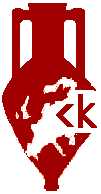Archaeology
Klejn L.S. Incorporeal heroes (The Origin of Homeric images) (Abstract)
Publ. in Russian 1994 by Khudozhestvennaya literatura and Farn, St.Petersburg
By Leo S. Klejn
The popular educational book (published in St. Petersburg by the large Russian publishing house "Khudozhestvennaya literatura" in cooperation with a small publisher "Farn" in 1994) is aimed at the intelligent layperson and professional scholars. It is devoted to heroes of Homeric Iliad. The book contains studies of fifteen of these heroes.
Chapter by chapter all the main images of this epic are considered with the aim to find which sources they entered the epic from. That is to say, to establish if they were real historical figures or purely artistic images – the fancy of their creator. By applying a number of philological and archaeological methods the author ascertains that neither of these ideas is correct. According to his conclusion, prototypes of the heroes existed previously in Greek cults. These were local cult heroes, protectors of certain spheres of life, in the manner of later Christian saints. These heroes originated in the funeral cults of prominent local figures: chieftains, sorcerers, healers, and soothsayers. Initially they had nothing in common with Trojan war or, in general, with the conquest of Asia Minor. Even the reality of Trojan war itself is doubtful, but this is the subject of another book.
The heroes of the Iliad were previously the objects of specialized cults. In the poem they deal only with what they protected as the cult heroes. So Achilles was a protector of the sea, the guardian of ships, and in the Iliad he enters into the battle only when the enemy approach the ships. Before the Iliad the old man Nestor was a cult healer connected with the god of physician Asclepius, and in the Iliad, though he is glorified as a great and wise commander, he in fact only treats wounds. And so on
The author has also succeeded in establishing the sequence in which these heroes entered the epic. The point is that in every folklore traditions (and epics were formed in such an environment) epithets exhibit a tendency to stiffen in standard formulas. The proportion of these standard formulas, in relation to more general epithets, can serve as indication of the longevity of the hero’s existence within the epic. Accordingly, the most ancient are Helen, her lover Alexander (Paris) and Ajax, Achilles and Hector appeared later, then Priamus and Patroclus, and finally Aeneas and Pandaros. This setting has allowed to isolate the earliest plotlines and reconstruct the stages in the formation of the plot of Iliad.
It is the author's opinion that the main plot of the Trojan cycle originated from the ancient vagrant story of the abduction of the beautiful wife of a king followed by the raid of the king, and his brother, aiming to recapture her. Just such a plot can be found in an Egyptian tale even older than the Iliad. Agamemnon was was a later inclusion – becoming a Mycenaean king, though earlier he had been a Spartan hero, like his brother Menelaus. Achilles joined the story later yet, and, in explain his absence from the main events of the war he was embroiled with the main leader Agamemnon – thus also explaining his absence from the battles. So the episode emerged that due to its vital exhortation (the harm from dissentions) became the main for the separate poem – Iliad: avoiding conflict became the main idea of the poem.
Of course all of this implies that the poem was not made in one creative act by one person – Homer, but was formed gradually by various singers and it contains parts of different origins. Yet the author has here left this inference as a suggestion: this idea is supported by statistical analysis of the text in another book, by the same author, The Anatomy of the Iliad.
The present book has its own clearly defined subject and its own aim and the author takes care not to stray from the task in hand.
The text is not long - some 190 pages, - and comes with a number of maps, schemes and copies of ancient depictions (the latter are not from the period to which the Trojan war is dated but from the Homeric period: 8th – 7th cent. B.C.). The text includes references only to classical authors, but at the end of the book there are bibliographies for every chapter – thus enabling the reader to become more deeply familiar with their respective subjects.
The author is already in possession of an English translation of the text. However, this does require checking by a native editor.
Back to top
CONTENTS
Part I. A General Survey
1. The Iliad and the Homeric question
2. The problem and methodology
Part II. Studies of the heroes
1. Paris
2. Helen
3. Agamemnon
4. Hector
5. Ajax
6. Achilles
7. Diomedes
8. Odysseus
9. Priamus
10. Nestor
11. Patroclus
12. Phoenix
13. Aeneas
14. Sarpedon
15. Pandarus
Part III. Conclusion. The Formation of the plot (an attempt at reconstruction)
Abbreviations (ancient texts)
Suggested further reading
Back to top
В начало страницы
По вопросам, связанным с размещением информации на сайте, обращайтесь по адресу: a.eremenko@archaeology.ru . Все тексты статей и монографий, опубликованные на сайте, присланы их авторами или получены в Сети в открытом доступе.
Коммерческое использование опубликованных материалов возможно только с разрешения владельцев авторских прав. При использовании материалов, опубликованных на сайте, ссылка обязательна © В.Е. Еременко 1999 - настоящее время
Нашли ошибку на сайте? Сообщите нам! Выделите ошибочный фрагмент текста и нажмите Ctrl+Enter
|
